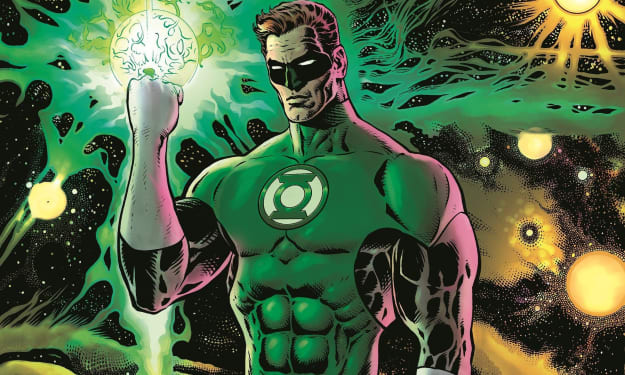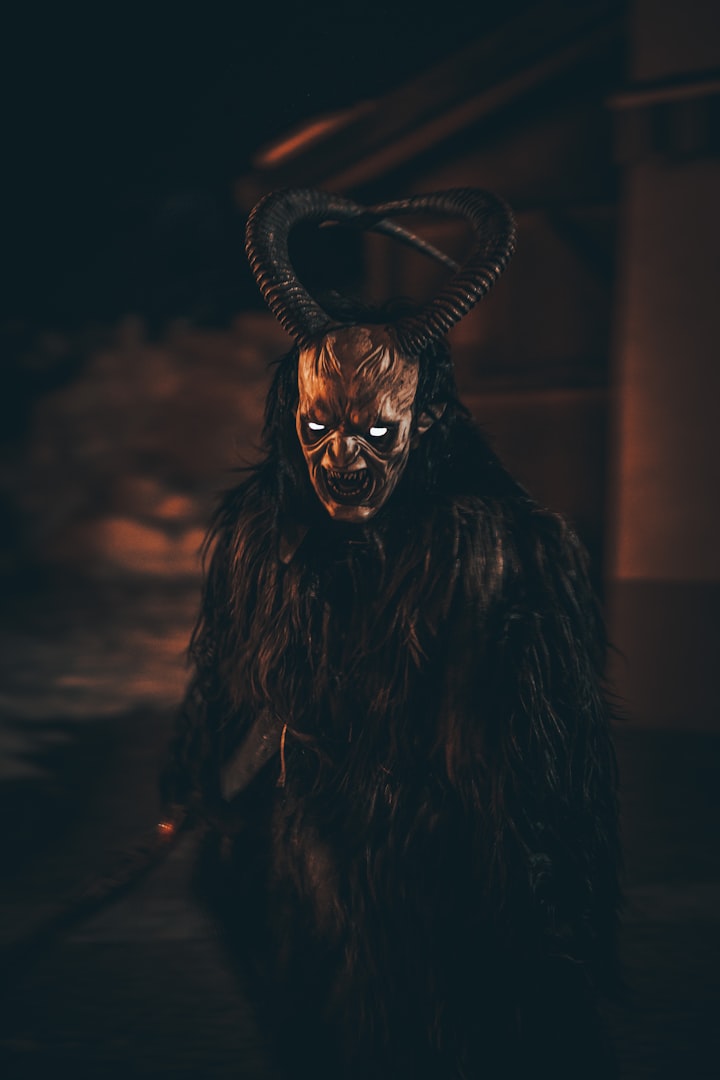
Netflix’s latest limited series The Haunting of Hill House is a chilling fantasy tale about a family broken apart by the spirits of their childhood home, one of the most haunted houses in America. While there are certainly ghosts and ghouls walking the halls of the titular Hill House, the family’s eclectic cases of mental illness, psychological trauma, and isolation fuel these nightmares and help deliver an authentically human horror story. Though creator/director Mike Flanagan may not have a perfect track record, his most effective work in the horror/thriller genre includes includes 2013’s Oculus , 2016’s Hush , and, in his first partnership with Netflix, 2017’s Gerald’s Game.
His work has improved drastically over the years as he experiments with different techniques to scare audiences. His first foray into long-form storytelling is undoubtedly his most successful yet. The strength of the show lies not with the groundwork of the familiar yet eerie haunted house setting nor the underlying deeper mental and psychological complications that disturb the family. Flanagan’s ability to deliver a story that succeeds in both fronts while crafting a unique and unforgettable visual style cements this show as one of the scariest and most addictive programs in recent memory.
The story opens on the Crain family adjusting to life in their new house, a project that father Hugh (E.T. ’s Henry Thomas) and mother Olivia (Gerald’s Game’s Carla Gugino) hope to work on and later flip for a profit. The children in the household, especially youngest Nell and her older twin Luke, are terrified of the place and the apparitions they constantly face. Hugh and Olivia are deaf to these complaints until it is too late. Tragedy strikes and the house claims their mother’s life forcing the family to leave in a panic. No one is more distraught by this than Hugh who now faces the overwhelming ordeal of raising five children on his own while grieving his wife’s sudden passing.
Oldest child Steven (Michiel Huisman) is perhaps Hugh’s greatest critic and an acclaimed author. Though his stories are often based around debunking popular haunted establishments, his greatest success is a book written about his family’s personal demons in Hill House. This sparks some outrage through the family but from no one as much as oldest sister Shirley (Elizabeth Reaser) who has a strong career as a funeral home director. Emotionally detached Theodora (Kate Siegel), endowed with hyper-sensitive psychic abilities, spends her days working as a child psychologist and her nights bouncing from sex partner to sex partner, favoring cheap thrills over intimacy.
Oldest twin Luke (Oliver Jackson-Cohen) has tragically lost his way in life and fights a crippling drug addiction that damages his connection with his family. Most devastating of all is youngest twin Nell (Victoria Pedretti). Growing up, she discovers the horrifying apparition that haunted her in her childhood home, “The Bent-Neck Lady”, is doomed to follow her through life as she suffers sleep paralysis. For one reason or another her family (save for her father) often ignores her distress. Her sole source of comfort, husband Arthur (Jordane Christie), passes away due to natural causes shortly after their marriage. Unsurprisingly, this leads Nell to suffer depression for the remainder of her days. These horrifically, dark, realistic tragedies are communicated even more effectively as the show personifies these fears through its genre.

STEVEN
Steven, for instance, resents his father for shielding him and his children from the truth of their mother’s death. Hugh’s insistence that the house itself is somehow responsible for Olivia’s death drives Steven on a desperate search for truth. He travels the country debunking haunted houses for future publications to provide others what Hugh had never given his children: closure.
Considering Steven’s proclivity to writing, however, he is often caught stretching the truth himself for personal gain. Shirley and Theodora have both vocalized to their brother the half-truths and lies in his work that they find hyperbolic. Nevertheless, he continues with the publication and is met with resounding success.
Much worse than this, however, is his dishonesty with his wife. Though she is desperate for children, Steven refuses to inform her that he had a vasectomy years ago in an effort to prevent his troubled family line from continuing. Despite his own objections to his father’s deceptiveness, Steven’s actions simply make him more akin to his father than anyone else in the family and eventually lead to the destruction of his own marriage.

SHIRLEY
As the second oldest sibling and eldest sister, Shirley similarly finds herself endowed with much responsibility. Whereas Steven finds himself desperate for the truth, Shirley is much more interested in control. She fights tooth and nail against Steven’s book publication and decides for her siblings that none of them shall accept Steven’s offer of shared royalties. She even goes so far as to refuse Luke’s entrance to Nell’s wedding despite Nell's obvious desire for him to attend.
Shirley’s entire life has been focused on controlling the one thing that is completely out of her control: death. Her first encounter with death comes after her efforts to nurture a box of diseased kittens fail. She is horrified at the image of an insect crawling from the mouth of a lifeless baby cat being laid to rest and is later haunted by the same insect escaping Nell’s mouth. Fearing death absolutely, she finds solace in her role as funeral director where she has complete control over the restoration of a recently passed loved one. Her power only goes this far as she, like everyone else, is completely helpless in putting a stopper to death.
Shirley is as hypocritical as Steven though as we later discover she had cheated on husband Kevin years ago. Though she is her siblings’ harshest critics and is often unjustly overbearing, it is clear that this is all projection of her own self-pity. She failed to control herself and remain faithful to Kevin, she failed to protect and nurture the kittens of her childhood and try as she might, she consistently fails to control death.

THEODORA
Theodora’s status as middle child curses her to live as part of the family with an undefined role. She is neither granted authority nor does she require constant supervision. For this reason, she feels detached not only from her family but from others. She is by no means unloved. On the contrary, she is terrified of connecting with others for fear of the pain it may bring her.
As a child, she bonded with Luke by playing with him in the house dumbwaiter. What at first seems harmless and fun results in a horrifying experience for Luke. Theodora holds herself responsible for his trauma and can hardly forgive herself. Ultimately, she distances herself emotionally from others and fills the void in her life with alcohol and meaningless sexual hookups.
A staple of Theodora’s character is her elbow-length black gloves, a not too subtle visual metaphor of the character's distant nature as well as a unique personality trait in relation to the genre. While they primarily act as a physical barrier between herself and others, the gloves are later explained to have an in-story purpose as well. Theodora discovers at a young age that she is “sensitive” meaning simply that her sense of touch is heightened to a psychic level. This is, again, rather on-the-nose subtext regarding her emotional sensitivity to others. It is only by the end of the show when she has fully embraced the romantic advances of a former fling that she discards the gloves and attempts to connect with her and her family.

LUKE & NELL
At last we come to the youngest and most troubled members of the Crain family. Twins Luke and Nell are perhaps most scarred from their childhood haunted home and the sudden tragic passing of their mother because they were so young and impressionable during this terrible time. The pair certainly had the most ghostly encounters of all the siblings and were even witnesses to a gruesome murder carried out by their own mother. Theirs are undoubtedly the most haunted and terrifyingly real stories this show has to offer.
Luke's descent into drug addiction is explored by his childhood behavior and the hauntings of Hill House. Being the youngest affords Luke and his sister the luxury of little to no responsibility. His life revolves around playing, most usually on his lonesome. When his parents introduce to him a "big boy hat" that does not yet fit him, he is stricken by the fear of impending responsibility. This fear manifests itself in the form of a large, pale apparition recovering the hat from the frightened boy in the middle of the night.
Eternally fearful of responsibility, he takes little care of himself and resorts to quick and easy pleasures. He finds himself caught in an endless cycle of addiction, rehab, recovery, and relapse. This causes great strain on his relationship with others and drives him further from his family. Without a mother or father in the picture, he had never received the full guidance he required to escape the tall, pale nightmare of responsibility. He is cursed to repeat his childish behavior until he receives the support he requires from his family and commits to a more structured, organized life.
Youngest Nell is the main focus of the story despite often being ignored or overlooked by her family throughout her life. As a child, she is dismissed by her mother and older siblings when she searches for a companion for her games. The family scoffs at her fears of the “bent-neck lady” who haunts her in her sleep. As an adult, her calls are rejected by her siblings when she is in her most lonesome hour. A flashback to a blackout in Hill House cements her invisibility as the family searches endlessly for her only to discover she had been screaming out to them the entire night from only a few feet away.
The most iconic horror element of the show, “The Bent-Neck Lady”, is revealed in episode five to be the immortal spirit of Nell following her suicide. She had been living in fear of the manifestation of her depression and eventual suicide for her entire life. Though she found a loving husband in Arthur who, above all else, actively worked to comfort her, their marriage had not lasted long before his sudden natural death. Completely isolated from her family and mourning the loss of the one person that brought her the compassion she needed, Nell tragically finds little left for her in life. She embraces death and by hanging herself becomes her own curse:
“The Bent-Neck Lady”.

HUGH AND OLIVIA
Crane parents Hugh and Olivia are both written with underlying characterizations that explore their roles as patriarch and matriarch, respectively. Olivia, as an architect, designs houses that Hugh constructs to make her image a reality. This is a clear parallel to the archetypal dynamic between a mother and father.
Olivia’s downfall, caused by the spirits of Hill House and perhaps her own undefined history of mental illness, is sparked by the fear of her children’s futures. Like Nell, her paranoia creates an unbreakable cycle as her panic for the twins’ harrowing adulthoods leads to her own demise. Had it had not been for this heartbreaking childhood trauma, perhaps they would have been able to lead fulfilling lives absent of addiction and depression. Or perhaps Olivia was well aware that whatever mental illness she suffered would surely be passed along to her children.
The guilt of creating such troubled people must have been crippling and the only solution she could muster was ensuring they never had to endure such awful lives. Despite the hopeless and painful lives suffered by the Crane children, none compare to Hugh’s suffering. On the surface level, Hugh worked tirelessly to fix and eventually flip Hill House while also juggling responsibility as father and husband. But look deeper and it is clear that the house was nothing more than the family he hoped to build with Olivia. He worked day and night but was widely unrecognized for his efforts.
It was Hugh that went to Nell’s side as she screamed at night about “The Bent-Neck Lady”. It was Hugh that sent Olivia to her sister’s to recover from her illness. It was Hugh that ushered his children to safety from the deranged mother on that fateful last night in the house. It was Hugh that answered Nell’s call the night of her death, promising to rush to her side in a heartbeat. It was Hugh that protected his children from the truth of the last night at Hill House, prompting Steven’s hatred towards him. And it was Hugh that had to endure the horror of losing a wife and daughter despite doing everything in his power to protect them.

CONCLUSION
Mike Flanagan’s The Haunting of Hill House proves to be one of the most tragic and horrifyingly real ghost stories in recent memory. Thematically similar to early 2018’s horror success Hereditary , the story presented over ten episodes is unquestionably set in the fantasy genre but is at its a core a unflinchingly realistic glance into the crumbling lives of a troubled family. Creepy apparitions exist in this story but are used sparingly and with intent. Instead of offering cheap scares, they reflect the nightmares of Hill House’s incumbents.
Ghosts of future suffering look back upon the children who are unable to escape their inevitably painful destinies. Their mother’s undefined psychosis bleeds into their lives inflicting each with their own demons to wrestle. Though father Hugh worked hard to keep his house from crumbling around him, he found the task impossible without his architect to guide him. Olivia’s possessed descent into madness broke the family apart leaving each to fend for themselves. Nell’s loneliness and nearly invisible status in the family lead her down a suicidal path in search of peace. Luke’s dependence on drugs, a replacement for human connection in life, nearly sends him down a similar path.
As the show concludes and the family works together to save youngest Luke from this horrific fate, it is clear that the crux of this show’s terror is, simply put, isolation. Acclaimed author Steven Crane says as much in his own novelization of the spirits of Hill House: “whatever walked there, walked alone.”






Comments
There are no comments for this story
Be the first to respond and start the conversation.